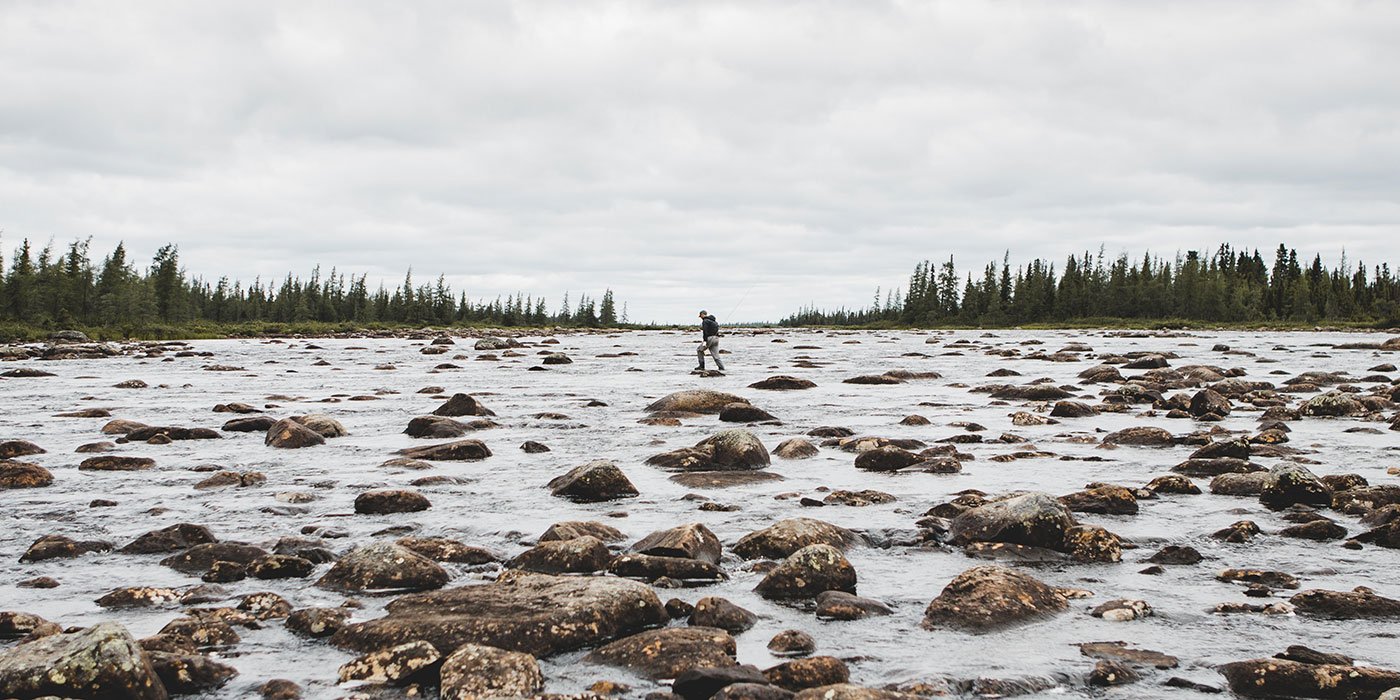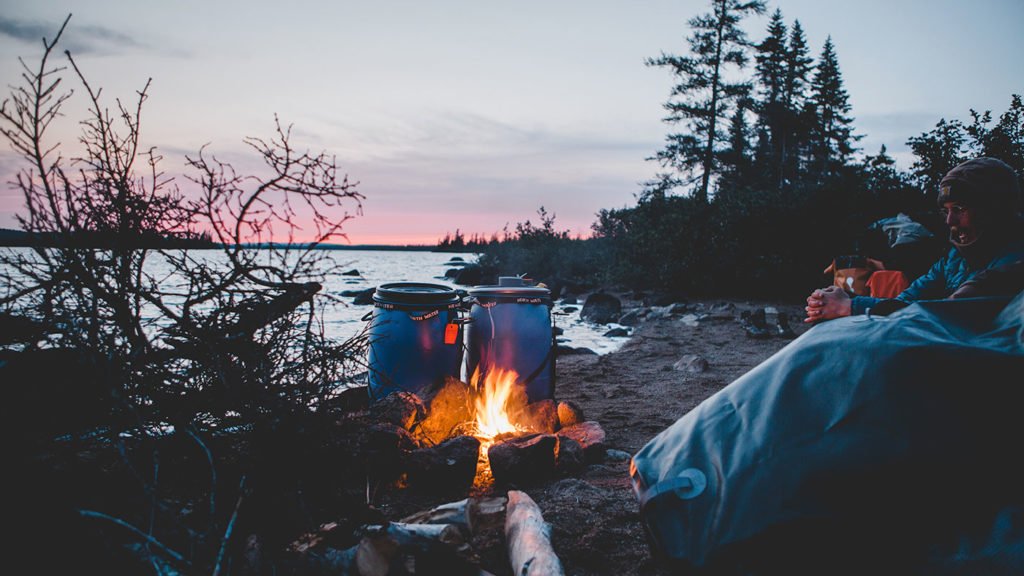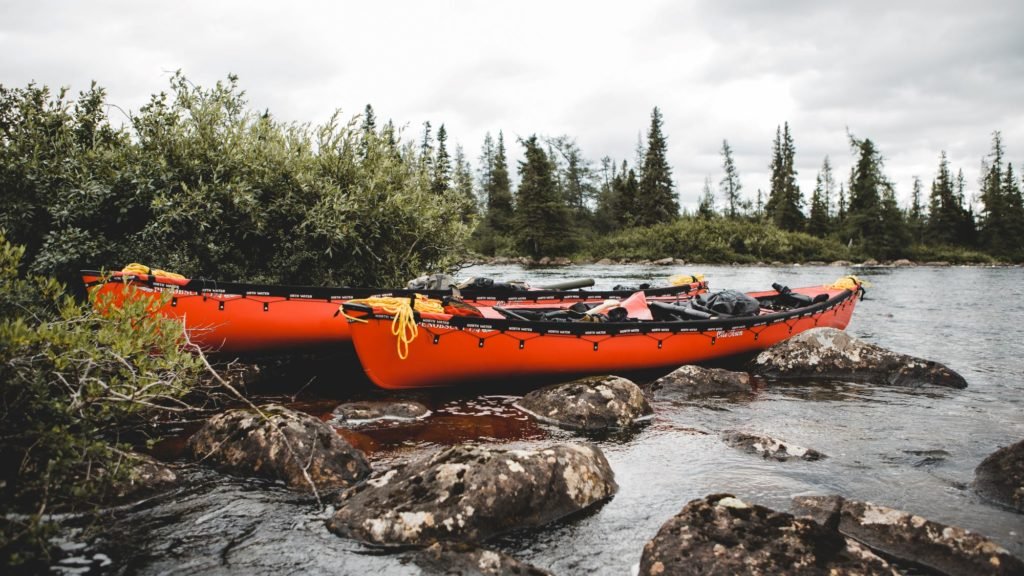Filmmaker Duo Explores Uninhabited Areas of North America

October 30, 2019
When Chase and Aimee Bartee got in their car — stuffed to
the roof with gear — to travel nearly 1,000 miles to a largely roadless,
uninhabited area of Canada, they weren’t entirely sure what they were getting
into.
The plan was to travel by car, train and floatplane to
Labrador, Canada, where 100,000 square miles of raw wilderness awaited them.
It’s a place where — at least according to written record — more than 50% of
the province’s lakes and rivers still have never been paddled.
The sacred nature of the undeveloped land, drastic swings
between heat and arctic cold temperatures and closely managed tourism meant that
for the 2 weeks they’d be camping in the bush, they were likely to be the only
humans within 1,000 square miles.
That fact was a cause of stress, as they knew it could be
days before help would reach them if something went wrong, but it was also the draw.
Chase, a videographer, and Aimee, a photographer, are both avid fly-fishers.
They were lured by the rurality of the land along with lore that the very first
game fish discovered by settlers — the brook trout — thrived unadulterated in
the waterways there. Thus came the inspiration for their latest movie, “Big
Land.”
“A big driving force for us is to go to remote places and
show people what’s there, just to get a conversation going so people will
realize that there are special things in places that they didn’t even know
existed, and that those things have an intrinsic value that’s worth
protecting,” Chase said.
For half a year, Chase and Aimee closely examined maps and
satellite images and researched the area. They convinced a young Nova Scotian —
who was a licensed guide — to accompany them as well as a friend with extensive
whitewater paddling experience. They tested an immense amount of gear, meal
planned every day of the trip, became experienced paddlers by going on practice
trips on Maine’s Allagash River and retrofitted their canoes to handle the adventure.
For a crew who was fully prepared to withstand constant
swarms of bugs, cold temperatures and sleeping in the bush, the time spent in
the quietude and wilderness of Labrador was magical and otherworldly. Chase and
Aimee both hope to go back for a longer paddling trip at some point in the
future.
“It was a land less complicated and conflicted by the burdens of the modern world,” Chase said.

inReach® for the Unexpected
Things weren’t always magical, however. From the beginning,
as a pilot flew them over their intended drop-off area, it became evident to
Chase and Aimee that things would not always go as planned on the trip — regardless
of their highly detailed preparation.
The waterway where their trip was supposed to begin was so
low that it was impossible for the pilot to land, causing a last-minute
rerouting to the middle of a lake. They spent their days traveling upstream
instead of down, chased instead of found the migratory brook trout (at first),
dealt with equipment failure, avoided a black bear and hoped for the best when
Chase cut his hand so deeply he would have required stitches in any other
scenario.
They’d never been anywhere that remote before but maintained communication by using two inReach Explorer+ devices. They used the inReach satellite communicator devices to share updates on social media with all the people who had donated to their Kickstarter fund for the movie and gave updates to their family via two-way messaging.
“For my parents, it was a nice way to communicate even if it
was just a very simple text message or just watching the MapShare™ page to see
that we were still moving around,” Aimee said. “It’s not always easy for our
parents to know that we’re going off to some wild place where rescue is at
least 24 hours away.”
In Labrador, the weather can change quickly, which they discovered
when they were forced to stay in their tents on an island campsite for several
days, bound by 60 mph winds and rain.
“To be able to get weather data when you’re in the middle of
nowhere, it did bring comfort to us,” Aimee said.
Because there was no infrastructure or marked trails or thoroughfares, they used the devices to track their routes and drop waypoints to label interesting places they had found. Plus, the beeps of messages from friends and family back home provided a comforting feeling to them while they were in a place with no other human connection except for each other, Chase said.

Where to next?
Ultimately, all the preparation paid off for Chase and
Aimee. The voyage was, by all means, a success. At the end of their trip they
finally found the migrating brook trout in abundance and then made the long
journey home safely. Since then, the movie has been embraced by fly-fishers and
outdoor enthusiasts alike and has sparked conversations about how to continue
preserving wild, unencumbered places such as Labrador.
Since wrapping the film, they’ve taken…
